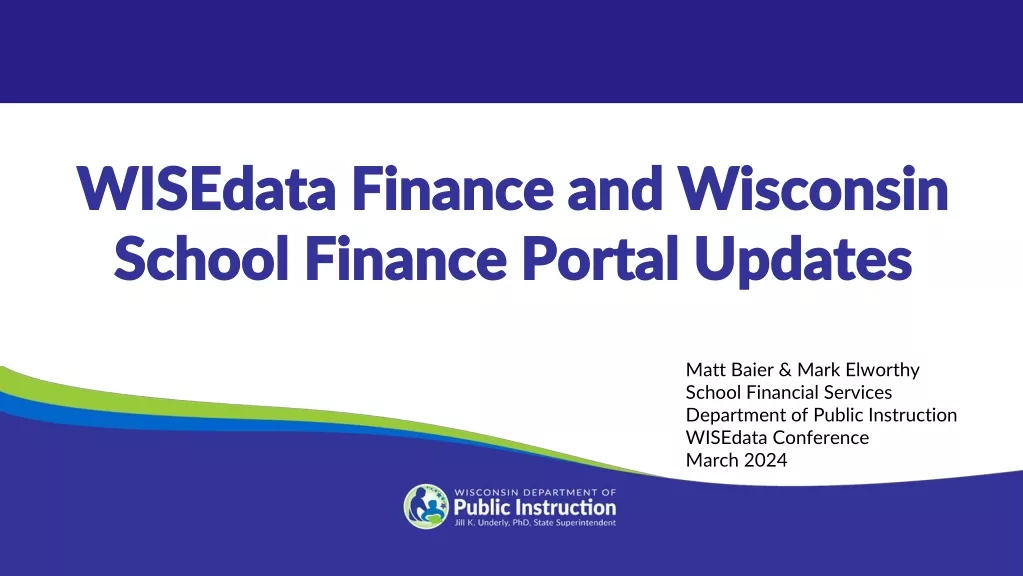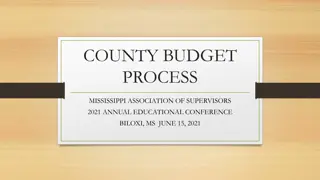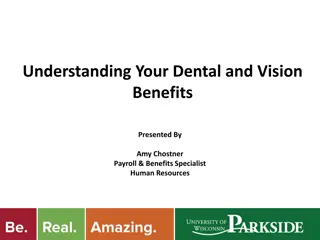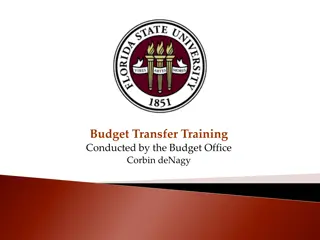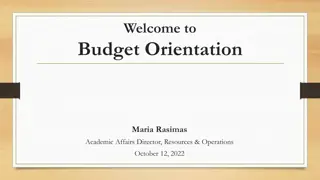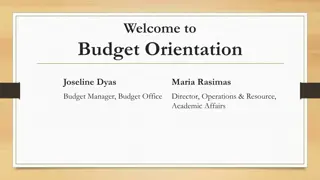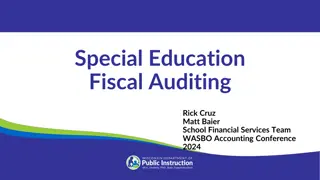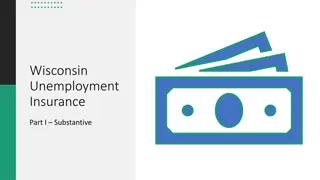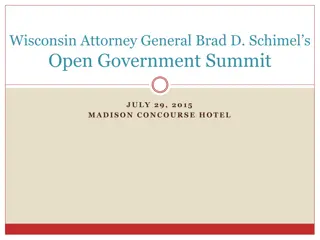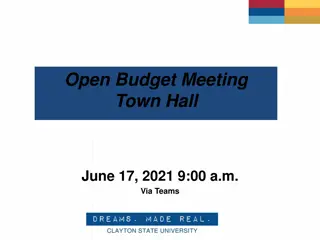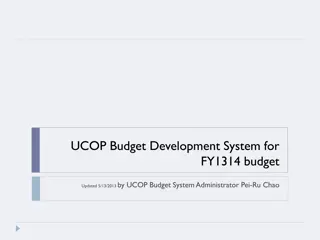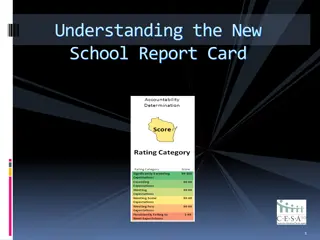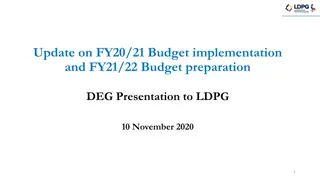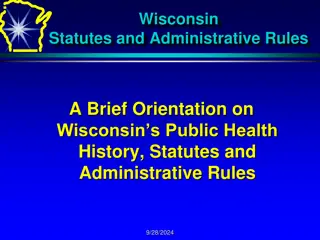Wisconsin State Budget Overview
Wisconsin's biennial state budget process is detailed, outlining how the budget is proposed, reviewed, and approved. The state relies on various tax sources for revenue and allocates funds predominantly to education, health care, and tax relief. The budget highlights the impact of Republican tax cuts and Governor Evers' proposed tax increases.
Download Presentation

Please find below an Image/Link to download the presentation.
The content on the website is provided AS IS for your information and personal use only. It may not be sold, licensed, or shared on other websites without obtaining consent from the author. Download presentation by click this link. If you encounter any issues during the download, it is possible that the publisher has removed the file from their server.
E N D
Presentation Transcript
The Fine Print WISCONSIN STATE BUDGET
State Budget Background Wisconsin has a biennial, two-year state budget. The legislative budget process begins in odd years when the Governor releases the executive budget. This typically happens in February. Wisconsin is not like the federal government. Wisconsin must have a balanced budget. Also, we do not shut down if a budget is not passed and signed by the end of the fiscal year; spending levels from the previous budget are continued. Thanks to responsible budgeting by Republicans, Wisconsin is in a strong economic position, despite threats of economic uncertainty nationwide.
State Budget: What Happens Now? Legislature/ Joint Committee on Finance Legislature Executive Executive Governor reviews budget passed by Legislature and signs it into law in whole or in part or vetoes it in full Assembly or Senate receives proposed budget & makes changes. Then sends budget to other house to make changes State agencies make budget requests Budget received by Joint Committee on Finance Budget proposed by Governor and sent to Legislature Committee holds public hearings With a 2/3rds vote, the Legislature can override any of the Governor s budget vetoes Committee makes changes & votes on budget
By the Numbers: Taxes and the Source 2022-23 Estimated Tax Collections Insurance Company $222 (in millions) State tax dollars are collected through a variety of means including through the sales and income taxes. Excise $655 Public Utility $391 Miscellaneous $136 Along with federal money, these dollars make up a bulk of what our state spends each year. Corporate Income/Franchise $2,910 Individual Income $9,610 Republicans eliminate all remaining portions of state property taxes, so all remaining property taxes are from local governments. Sales and Use $7,480
By the Numbers: Where the Money is Spent 2021-23 Budget General Fund Spending State general purpose dollars are mostly used for education and health care for the poor. All Other 7.8% Shared Revenue and Tax Relief 13.0% Human relations and resources include low income health care like BadgerCare. Education 46.3% Programs like state transportation spending largely come from separate, segregated accounts. Human Relations and Resources 32.9%
By the Numbers: Taxes Over the Years Under Republican leadership, we ve provided major tax cuts A median-income family is paying over $1,500 less each year in income taxes thanks to Republican tax cuts Republicans provided over $8.5 billion in property tax relief since 2014 Governor Evers is proposing more than $1.5 billion in tax increases
By the Numbers: Evers Spending Spree Republicans had been leading the state since 2011. Prior to the pandemic, dependence on welfare was decreasing and our unemployment rate was hovering at a historical low. Increase In Spending Overall by State Budget 2023-25* 17.5% 2021-23 5.4% 2019-21 5.5% 2017-19 3.1% 2015-17 3.7% Gov. Evers has proposed spending much more in this budget than before reversing the policies that aided our economic growth and turning surpluses into deficits. 2013-15 4.1% 2011-13 1.8% 2009-11 6.2% 2007-09 6.6% *Governor proposed 2005-07 6.0%
By the Numbers: Evers Spending Spree and Items that Don t Belong in a Budget Expands the size of state government by adding more than 800 new employees across agencies Increases spending by 23% Repeals Act 10, prevailing wage and other reforms that have saved billions Extends in-state tuition benefits to undocumented immigrants and gives driver license to illegal immigrants Expands welfare benefits while eliminating drug testing and work requirement safeguards Loosens voting requirements and proposes gun control laws Much, much more
Budgeting Within our Means Our budget is projected to have a $7 billion surplus and our state s rainy day fund is estimated to be nearly $1.7 billion. There are a number of shared priorities in this budget that we can work together on such as K-12 education and workforce development but Gov. Evers budget proposal relies too heavily on tax increases and out of control spending to be taken seriously. Evers budget would create a $1.4 billion structural deficit going forward! Economists are warning of economic uncertainty ahead hiking taxes and expanding government will only take us backward. Next Steps Now that Gov. Evers budget bill has been introduced, the Legislature will begin our work by reviewing the contents of the budget and holding public hearings around the state.
Thank You for Your Input! Questions? Feedback? Visit Wisconsin State Rep. Michalskito provide feedback or inquire about specific budget provisions. Or call my office toll- free at: (608)-237-9113 [Insert Bio Photo Here] Scan this QR Code to find a copy of Gov. Evers budget proposal



